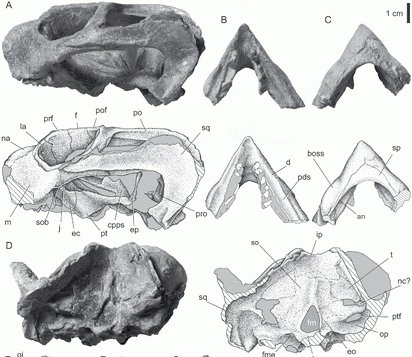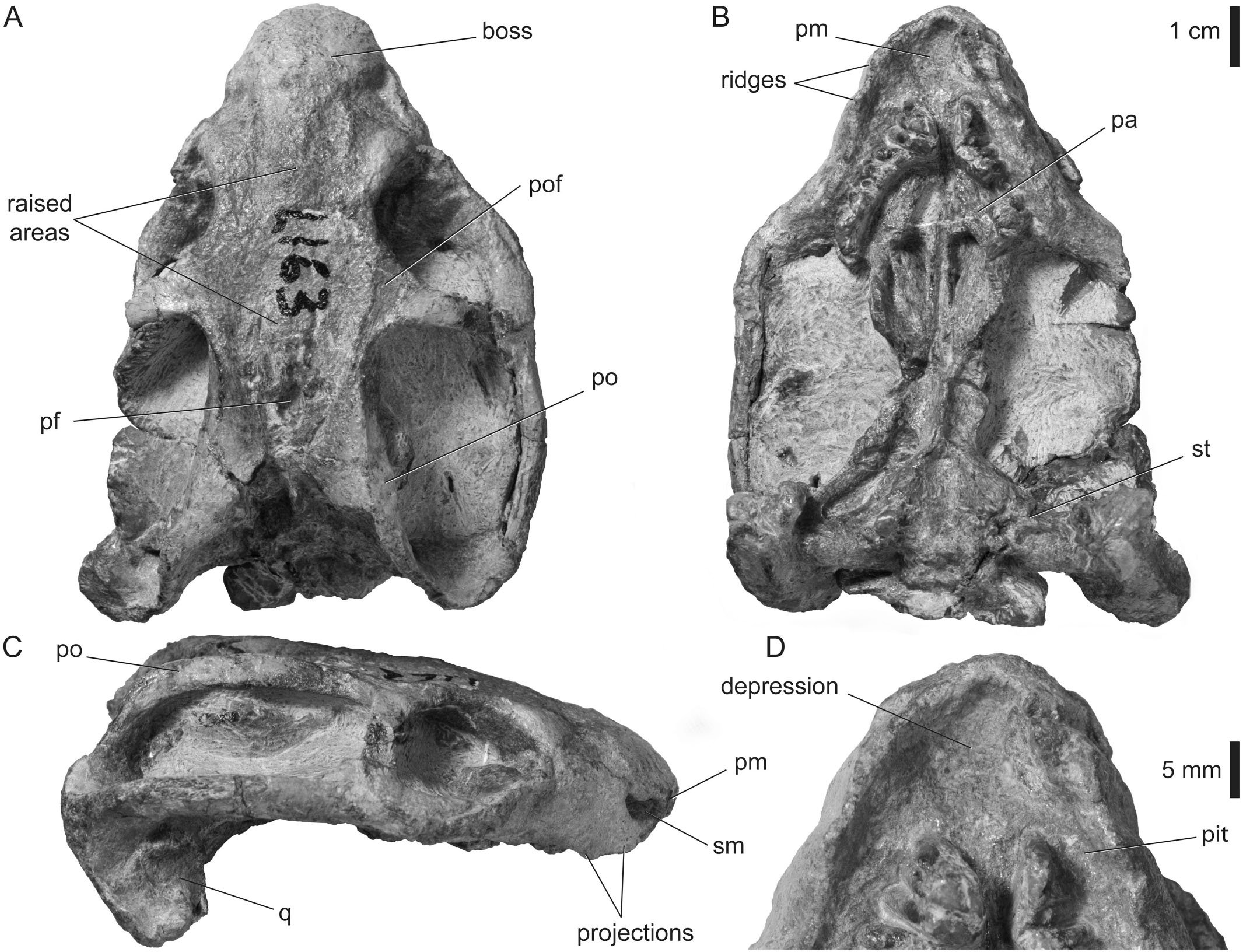Welcome to Abajudon

Name Definition
unavailable
Name Given By
Kenneth D. Angielczyk, Sébastien Huertas, Roger M. H. Smith, Neil J. Tabor, Christian A. Sidor, Jean-Sébastien Steyer, Linda A. Tsuji & Neil J. Gostling in 2014
Location
Ruhuhu Formation of Tanzania as well as the Madumabisa Mudstone Formation in Zambia, both in Africa
Classification
Reptiliomorpha, Amniota, Synapsida, Therapsida, Anomodontia, Dicynodontia
Size
Unavailable
Temporal Range
Guadulupian epoch of middle Permian, approximately 273 - 268 million years ago
Ecological niche
Given it is the sister taxon of Endothiodon, Abajudon would have been a relatively small herbivore in its environment
Species/Sub Species
A. kaayai
Diet
given it is closely related to Endothiodon, Abajudon may have been a grazer and consumed grasses in open areas
Introduction
Abajudon is a genus of extinct dicynodont therapsids that lived in Tanzania and Zambia in Africa during the middle Permian.
The first Permian tetrapod fossils in the Ruhuhu Formation (where Abajudon was discovered) were discovered in 1963, however they received significantly less attention than those belonging to the overlying Usili Formation (initially called the Kawinga Formation). Abajudon was initially discovered in the Ruhuhu Formation in 2008. The type and only species, Abajudon kaayai, is represented from a fragmentary skull and a mandible (lower jaw in mammals and reptiles). Abajudon is also characterized from its autapomorphic teeth on its upper jaw which have a triangular cross-section (the cross section is the shape of the top surface on the bottom half or the bottom surface of the top half if you were to cut a shape in half), they have procurved tips (procurve means curve forward), and the teeth bear a deep groove on their mesial surfaces (a mesial surface is the surface of an object that is closest to the middle of the face). A second specimen of Abajudon was also discovered in the Ruhuhu Formation that also consisted of a mandible and a partial skull. While Abajudon does display similarities to the other dicynodonts Endothiodon and Brachyposopus, its exact position in the Dicynodontia was at the time unknown. Due to multiple tetrapods being found in Tanzania and Zambia (Abajudon was discovered in the Madumabisa Mudstone Formation of Zambia recently), it backs up the claim that southern Gondwana (however during the Permian Gondwana was connected with Euramerica to create the supercontinent Pangaea) was characterized by a widespread population of tetrapods for a long time before the mass extinction at the end of the Permian that caused some biogeographic restructuring.
Not until recently, new materials of Abajudon were reported in the Madumabisa Mudstone Formation in Zambia. 6 skulls were collected from the Madumabisa Mudstone Formation and were assigned to the relatively poorly-known dicynodont. However, because of this new discovery with the skulls displaying similarities to emydopoids, endothiodonts, and other basal dicynodonts, it is now known how Abajudon fitted into the dicynodont lineage. Abajudon is recovered as the sister taxon of Endothiodon, with the Endothiodontia reconstructed as the sister group of the Therochelonia. This reclassification helps explain why Abajudon shares both emydopoid (since the Emydopoidea is contained in the Therochelonia) and endothiodont features, as well as in genera such as Niassodon and Cryptocynodon. Given the absence of the basal Abajudon in the South African Karoo basin, it suggests that endothiodont dicynodont evolution took place outside of the Karoo Basin.
Sources:
- http://www.prehistoric-wildlife.com/species/a/abajudon.html
- https://www.tandfonline.com/doi/abs/10.1080/02724634.2014.880448
- https://www.tandfonline.com/doi/abs/10.1080/02724634.2017.1403442
